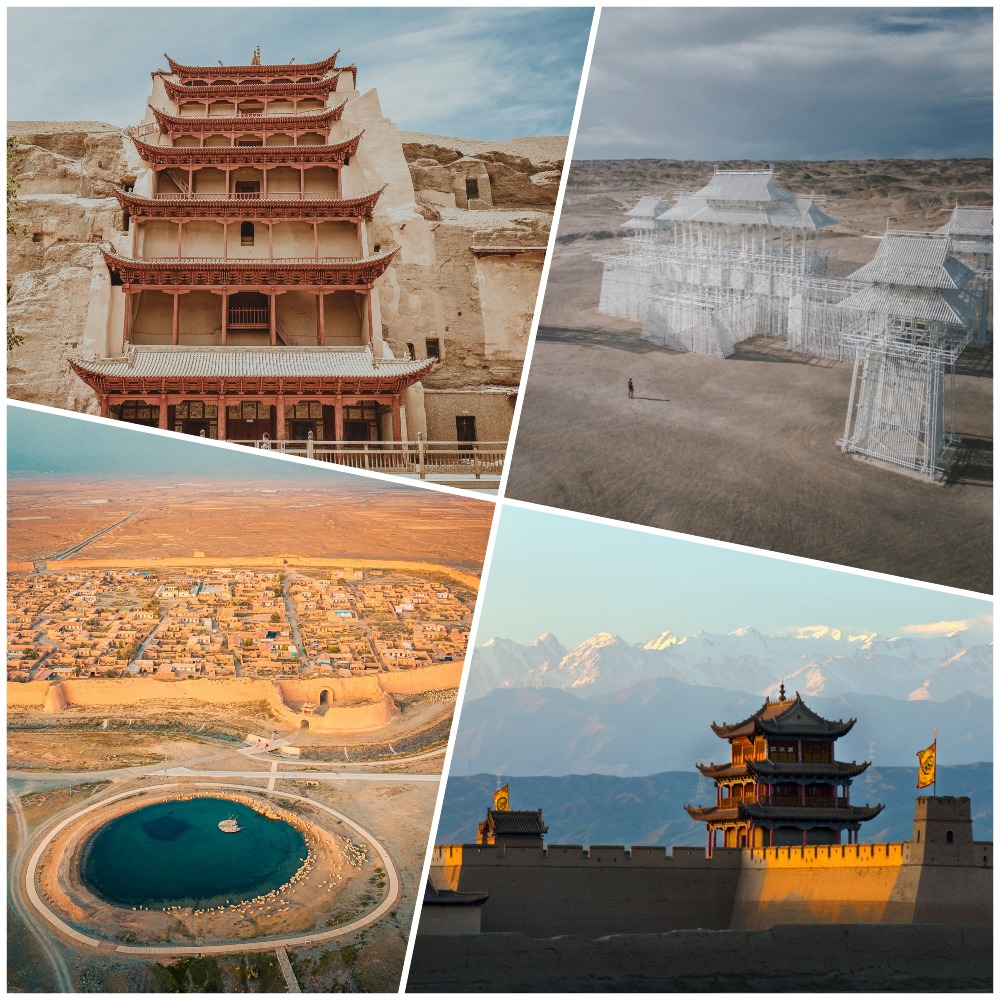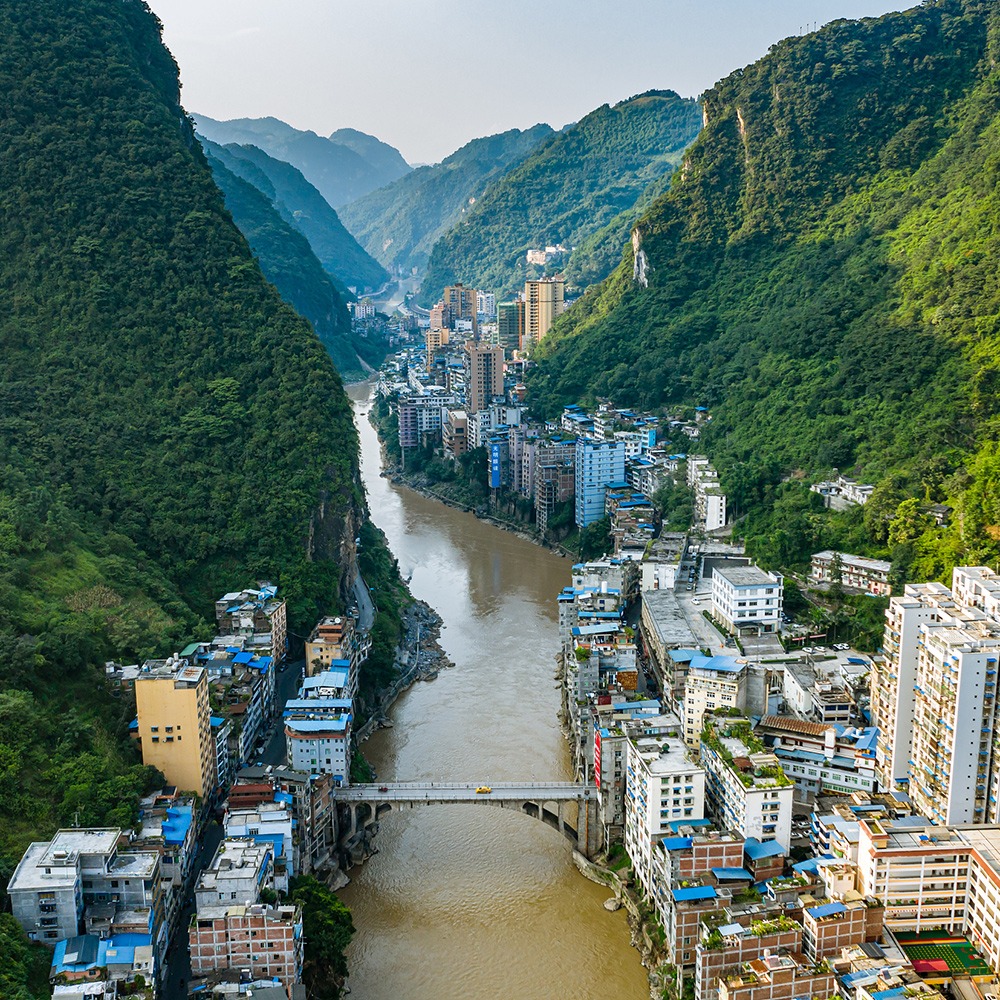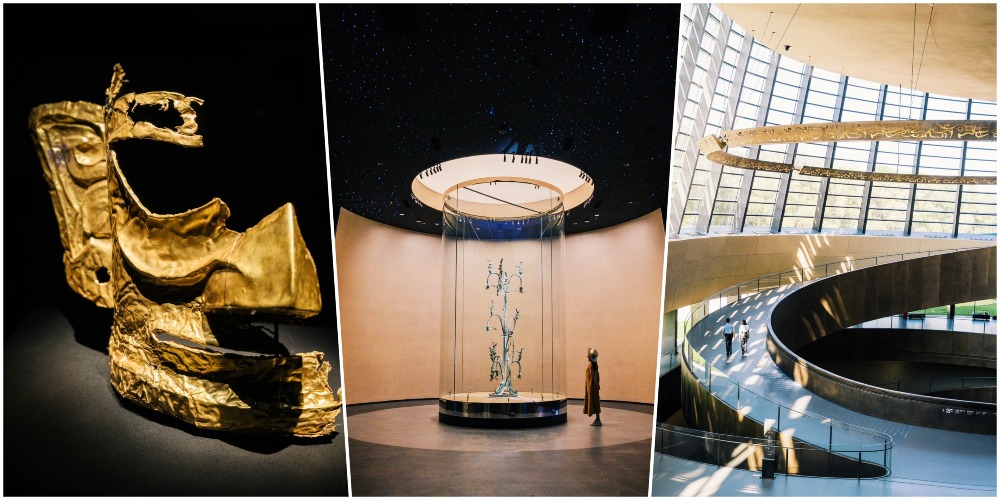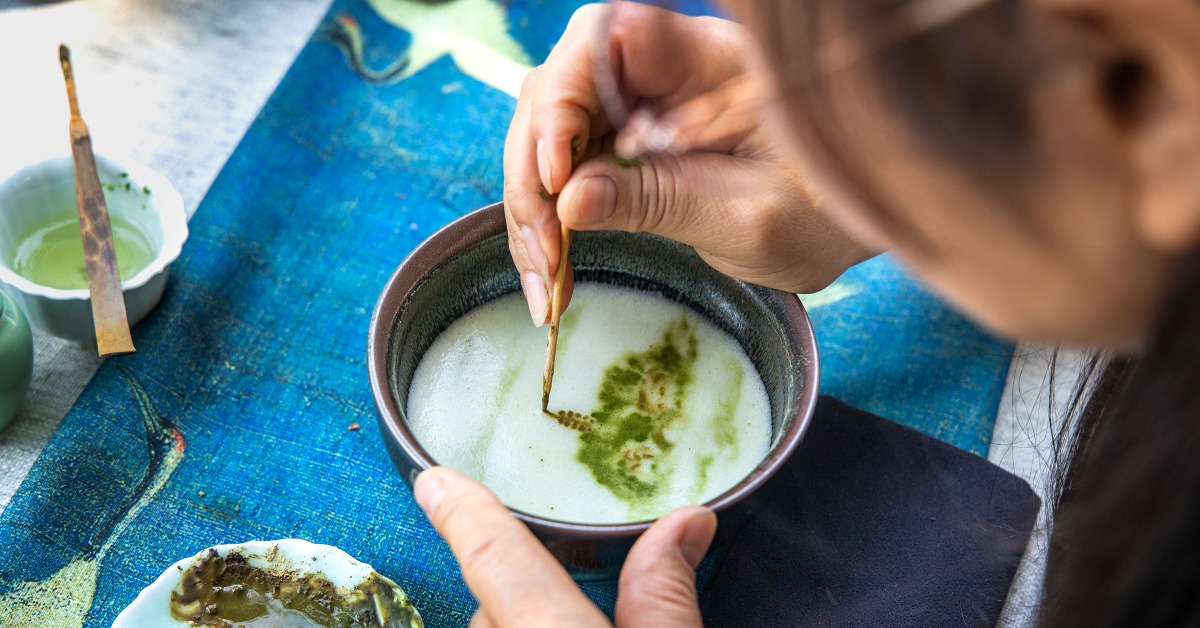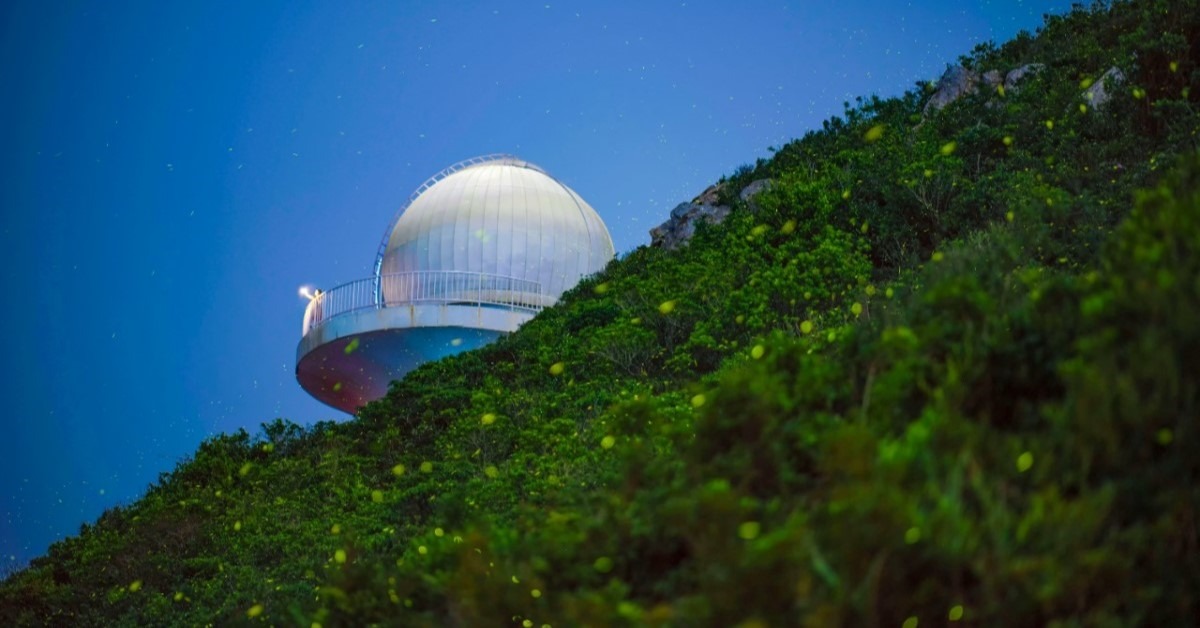Published : 2023-11-02
As a vital route of the ancient Silk Road, the Hexi Corridor links up the four counties of Jiuquan, Wuwei, Dunhuang, and Zhangye in Gansu Province, stretching thousands of miles, featuring countless magnificent natural and historic sites.
When traveling to the Hexi Corridor, if you want to deeply understand the Silk Road civilisation and Gansu's unique culture, it's a must to visit the following four cultural sites on a journey through time and space!
Mogao Caves in Dunhuang: The world's pinnacle of Buddhist art
At the westernmost end of the Hexi Corridor, Dunhuang, there lies an art treasure house of a thousand years, revered as the "Oriental Louvre", world-renowned for its exquisitely-crafted Buddhist statues and murals. It is the Mogao Caves.
"Without visiting the Mogao Caves, you cannot say you've been to Dunhuang." That is a common saying.
The Mogao Caves, located on the Mingsha Mountain in Dunhuang, have been excavated over 1,500 years, spanning 10 dynasties. They are the largest repository of Buddhist art in China and the world.

The Mogao Caves, also known as the Thousand Buddha Caves, are more than 1,600 metres long and contain 735 caves. The caves feature colourful wall paintings and colourful sculptures, as well as magnificent grotto architecture.
Over the past thousand years, they have witnessed the rise and fall of China's grotto art development, and are a magnificent scenery not to be missed in the Hexi Corridor.
Read more: How many types of caves are there in the Mogao Caves of Dunhuang?
Sculptures of "Boundless" and "Son of the Earth": Mirage in the desert
Apart from the Mogao Caves, there are many historic and exquisite Buddhist grottoes along the Hexi Corridor, such as the Yulin Grottoes, the Matisi Grottoes, and the Tiantishan Grottoes. However, our next stop isn't these sites, but a "mirage" along our route.
On the way from Dunhuang to the Yulin Grottoes in Guazhou, you will find the boundless Gobi desert. Among the endless yellow sand, two large, modernised sculptures stand tall. One appears like a "city tower", the other like a baby. At first glance, they seem to be a mirage, phantasmal and real.

These two sculptures are works of Dong Shubing, a professor at the Tsinghua University Academy of Arts & Design, and are named "Boundless" and "Son of the Earth".
The inspiration for "Boundless" comes from the buildings in Dunhuang murals, the flowery terraces, and pavilions, constructed from steel.
Another side, the "Son of the Earth" is shaped like a dreaming infant and is carved from red sandstone, expressing the primitive and powerful vitality of the desert. Both are unique and demonstrate the unique charm of Gobi sculpture.

Yongtai ancient city: A unique "turtle"-shaped ancient fortress
If at the westernmost end of the Hexi Corridor lies the legendary religious treasures of the Mogao Caves in Dunhuang, then at the eastern end in Jingtai, rests the legendary ancient fortress of the Ming Dynasty: the Yongtai ancient city.
The Yongtai ancient city is located in Baiyin. It is a military fortress built by the Ming Dynasty against the invasion of nomads from the north and has a history of over 400 years.

From an aerial view, the Yongtai ancient city resembles a colossal turtle lying amid the Gobi, hence its nickname "Yongtai Turtle City" (永泰龜城). It stands out among the myriad ancient structures.
As a military fortress during the Ming Dynasty, the Yongtai ancient city still retains a number of military facilities and buildings, including the city wall made of yellow earth rammed into the city, turrets, barbican (one of the main defence facilities of the ancient city), and beacon towers stretching for dozens of miles.

With the change of dynasties, after the Yongtai Ancient City was relieved of its military duties, it became a "comfortable nest" for the soldiers and their descendants. Nowadays, only about 30 families live here, leading a peaceful life. If you want to experience the rustic and original humanistic charm, the Yongtai ancient city is a great choice!
Jiayuguan Pass: The most majestic pass under heaven
In the Hexi Corridor, related historic buildings from the Ming Dynasty are not only confined to the Yongtai ancient city, but also include the well-known Jiayuguan Pass.
Jiayuguan Pass, hailed as "The Most Majestic Pass Under Heaven", is located on Jiayuguan Mountain. It is the starting point in the west of the Great Wall of the Ming Dynasty.
After being built over a period of 168 years, it became the most rigorous among the thousands of passes in the Ming Dynasty's Great Wall. It is also the oldest and best-preserved one.

Jiayuguan consists of an inner city and an outer city, with the inner city being the main one, featuring three major city towers with interconnecting buildings and an elaborate layout.
Most of the architectural styles combine the characteristics of the Central Plains and the Western Regions, demonstrating the diverse colours of the ancient Silk Road town, where Chinese and Western cultures mingled.
Climbing up to the wall of the Jiayuguan Pass, you can enjoy a panoramic view of the boundless Gobi, and trace the vicissitudes and splendour of the century-old border crossing.
Read more: Travel along Hexi Corridor: see the best geological wonders

